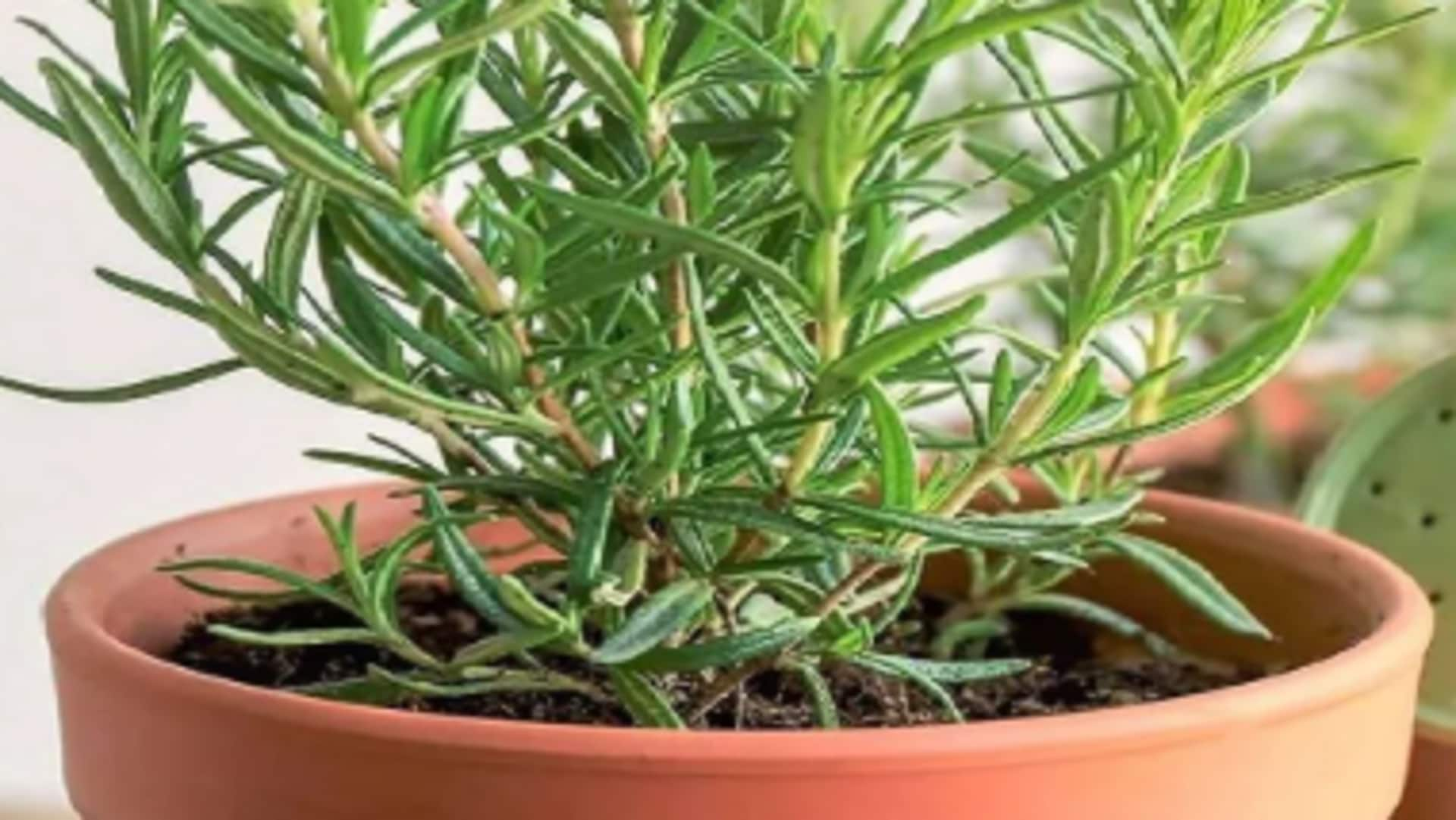
How to grow rosemary at home
What's the story
Growing rosemary indoors can be a rewarding experience, giving you fresh herbs for cooking and a beautiful fragrance in your home. This hardy herb is perfect for indoor growing if you give it the right conditions. With proper care, rosemary can thrive all year round, offering both aesthetic and practical benefits. Here are some essential tips to help your indoor rosemary plant flourish.
Container choice
Choosing the right container
Choosing the right container is essential when growing rosemary indoors. Choose a pot with adequate drainage holes to avoid waterlogging, which may cause root rot. A clay or terracotta pot would be perfect since the excess moisture evaporates more easily from it than from plastic pots. Make sure the container is big enough to hold the plant's root system, usually around 12 inches in diameter.
Light requirements
Providing adequate light
Rosemary needs a lot of sunlight to thrive indoors. Keep your plant close to a south-facing window so that it gets a minimum of six hours of direct sunlight each day. If natural light is not enough, you can use grow lights to meet lighting requirements. Hanging the lights six inches above the plant will help replicate natural sunlight conditions.
Soil needs
Maintaining proper soil conditions
The soil for growing rosemary has to be well-draining and slightly acidic, with a pH of six to seven. A cactus or succulent mix does well as it drains so well. You can also make your own mix by mixing equal parts of potting soil, sand, and perlite or vermiculite.
Watering tips
Watering wisely
Watering rosemary right is crucial for its health; overwatering can be harmful, while underwatering can lead to wilting. Let the top inch of soil dry out before watering again thoroughly until water drains from the bottom of the pot. This way, the roots get proper moisture without getting waterlogged.
Pruning practices
Pruning regularly
Regular pruning encourages bushier growth in your rosemary plants. It prevents them from becoming leggy or sparse over time. Trim back stems by one-third every few months with clean scissors or pruning shears. This not only maintains shape but also promotes new growth throughout each season indoors.